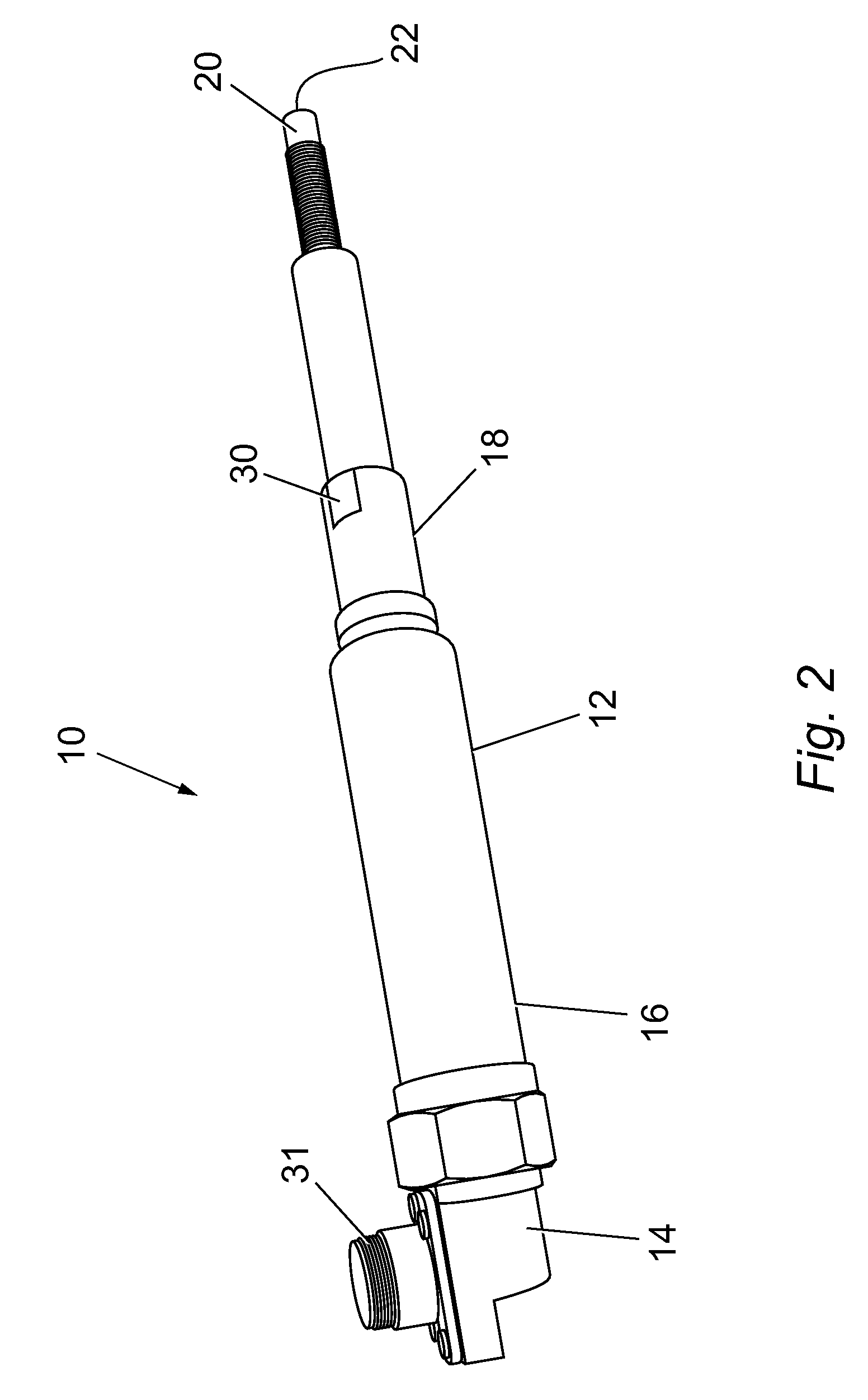Resonator assembly
a resonator and assembly technology, applied in the direction of combustion engines, engine components, electrical apparatus, etc., can solve the problems of not knowing the electrical parameters and neglecting the protection against high voltage, and achieve the effect of facilitating the mechanical construction reducing the cost of production, and ensuring the safety of the resonator assembly
- Summary
- Abstract
- Description
- Claims
- Application Information
AI Technical Summary
Benefits of technology
Problems solved by technology
Method used
Image
Examples
Embodiment Construction
[0023]FIG. 1 shows a schematically simplified resonator assembly according to the invention, marked 10 as a whole. This includes, in a common housing 12, functional sections arranged in section-like fashion along a longitudinal axis, namely a generator section 14, an inductance section 16, a capacitance section 18 and an ignition section 20. The housing 12 surrounds all the above-mentioned functional sections and has an opening 22 in the region of the ignition section 20. The housing 12 is made of a conductive material or has at least one conductive surface.
[0024]The generator section 14 includes in a manner known in the art an electronic system 24, shown only schematically, which operates to excite the inductance section 16 and the capacitance section 18 and generates a voltage superelevation therein during operation. For this purpose the electronic system 24 includes its own oscillating circuit which is electromagnetically coupled to the inductance section 16, the oscillating circ...
PUM
 Login to View More
Login to View More Abstract
Description
Claims
Application Information
 Login to View More
Login to View More - R&D
- Intellectual Property
- Life Sciences
- Materials
- Tech Scout
- Unparalleled Data Quality
- Higher Quality Content
- 60% Fewer Hallucinations
Browse by: Latest US Patents, China's latest patents, Technical Efficacy Thesaurus, Application Domain, Technology Topic, Popular Technical Reports.
© 2025 PatSnap. All rights reserved.Legal|Privacy policy|Modern Slavery Act Transparency Statement|Sitemap|About US| Contact US: help@patsnap.com



